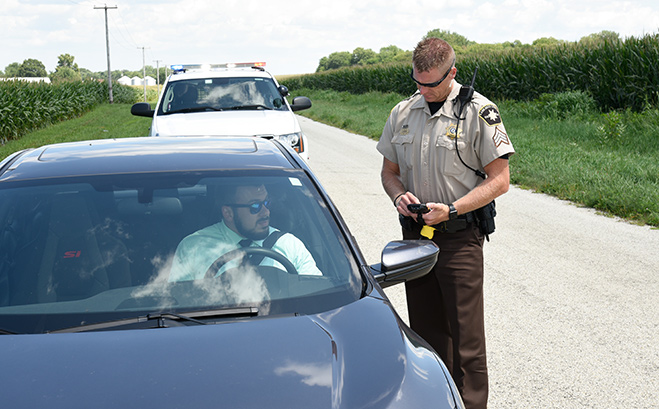How to Make Traffic Stops Safer
June 04, 2019 by Dana Rasmussen

During a typical traffic stop, law enforcement officers only have a few options when it comes to checking out the driver of the vehicle.
Traditionally, an officer would gather a driver's license and registration from the driver, walk back to his or her vehicle, and process the information through a mobile data terminal (MDT) running public safety software.
This method generates any known information about the driver and alerts the officer to any existing warrants or issues. Alternatively, the officer could ask dispatch to run the information over the radio, but this is dependent on there being an opening in radio traffic.
Throughout this process, officers have no choice but to take their eyes off the driver and walk back and forth from the scene. This prolongs the time on the roadside and increases the chances for issues to happen that impact officer safety.
According to National Law Enforcement Officers Memorial Fund data, 17 officers were killed during traffic-related incidents, which includes traffic stops.
Mobility apps help mitigate these safety issues and improve access to information to officers when they are out of their vehicles.
With a law enforcement mobility app, an officer performing a traffic stop can scan a license and check for warrants and other alerts from the agency's records management system, and request backup all within seconds.
The officer never has to step away from the traffic stop or use the dispatcher's time, yet still performs all the same processes done on an MDT using a smartphone. Data is gathered quickly and efficiently, improving workflow for the officer, and dispatcher, and getting the citizen and officer back on the road faster and more safely.